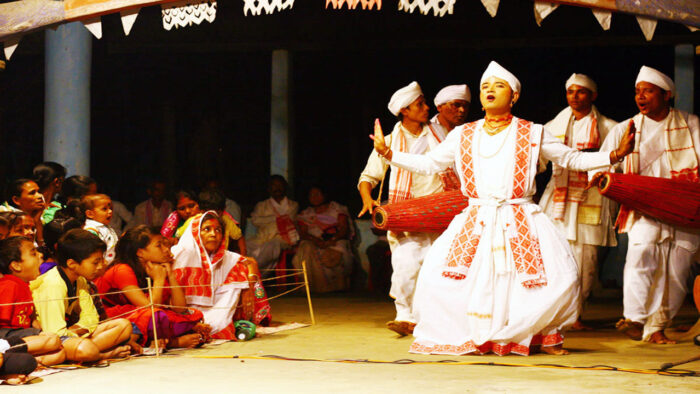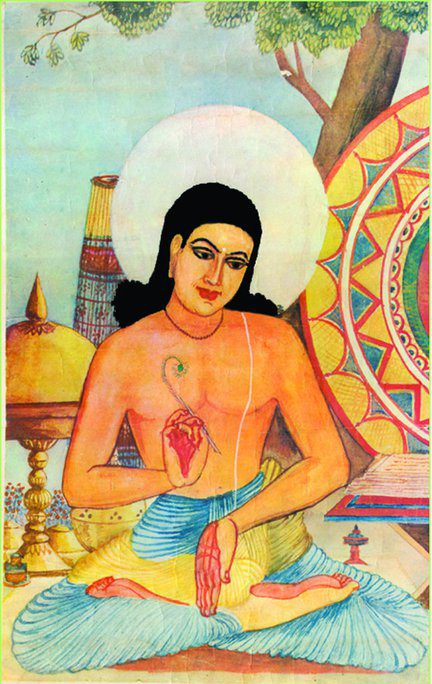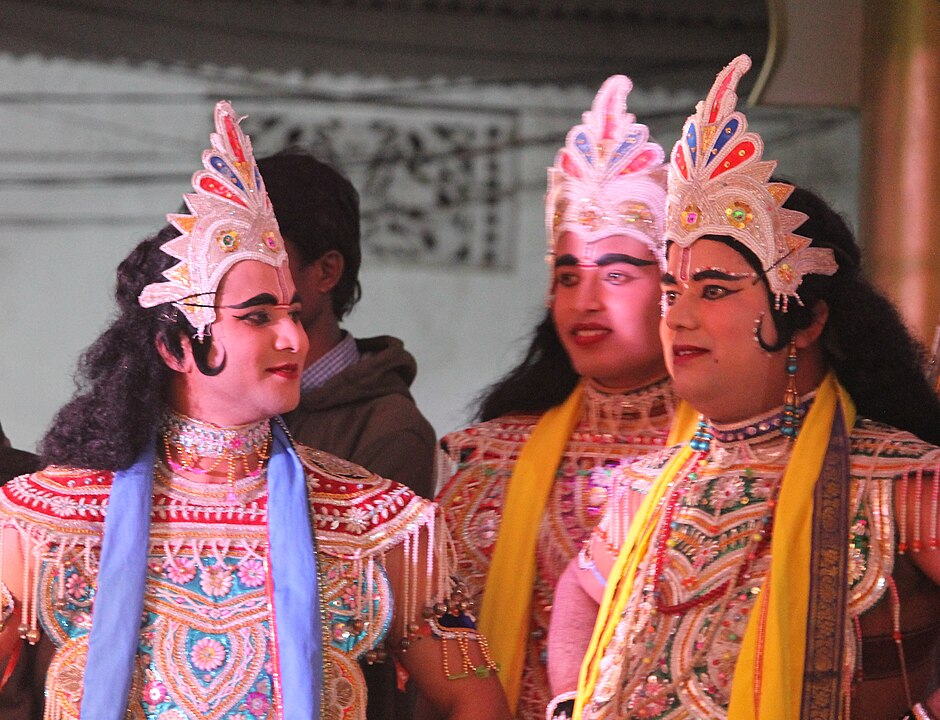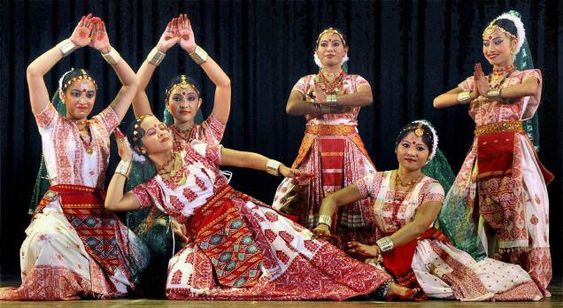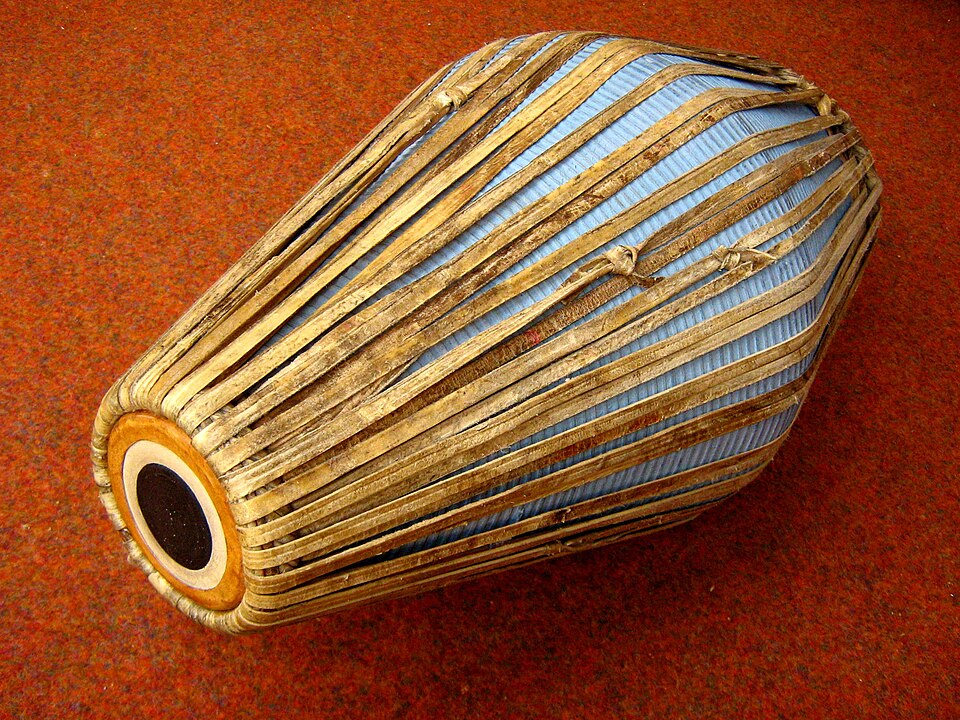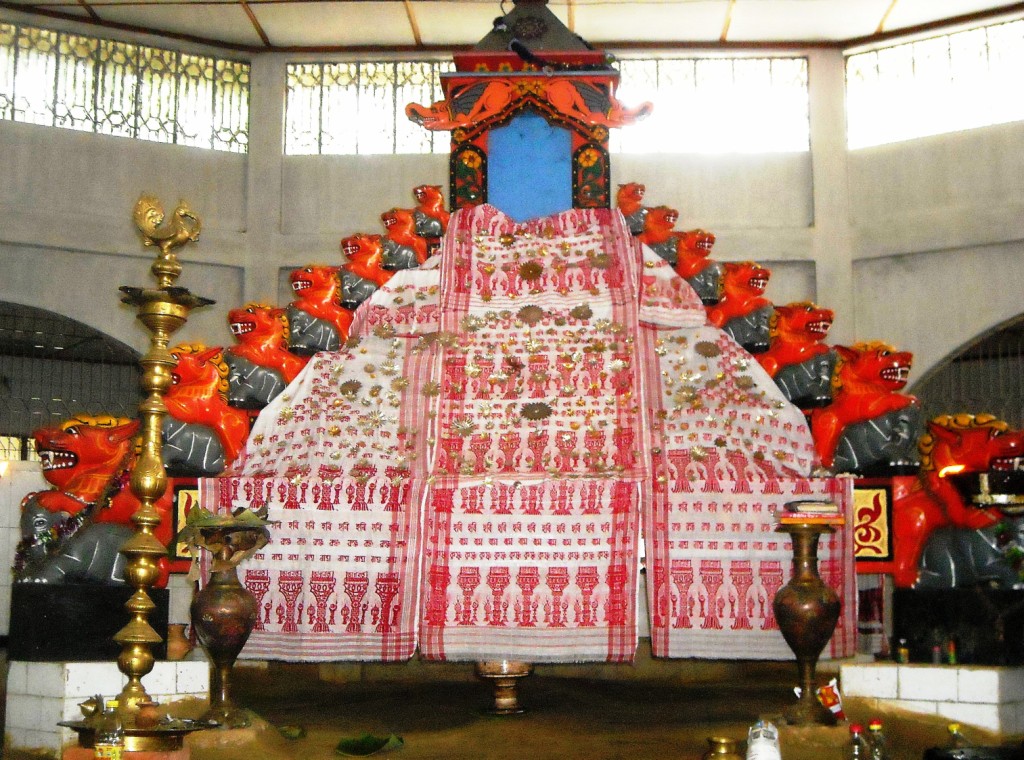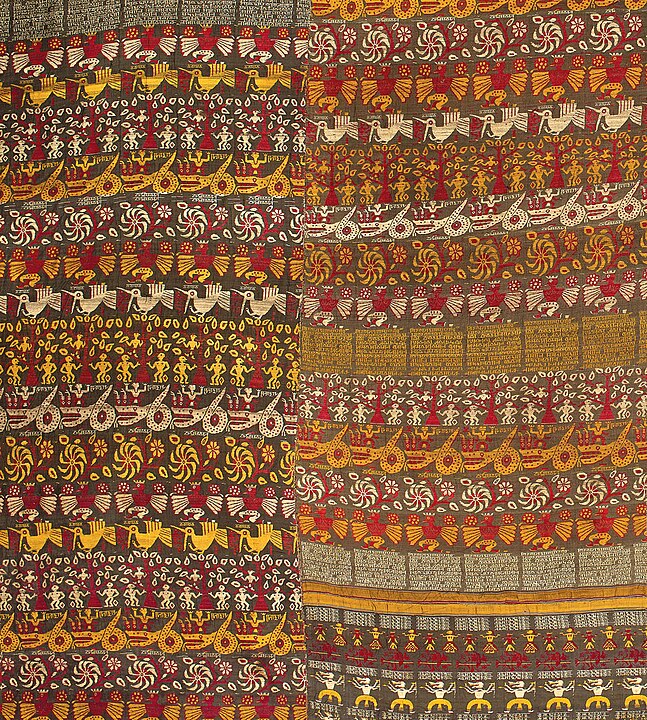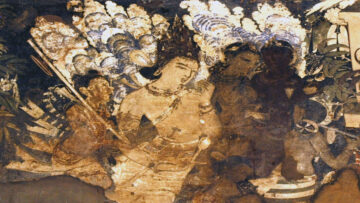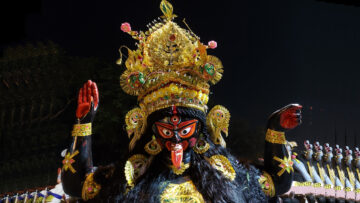(Understanding Acculturation, Sanskritization & Environmental Ethics in Assamese)
Abstract
Shankardeva (1449-1568) was the saint of Assam who spearheaded the religious Neo-Vaishnavite movement, which propogated the tradition of Vaishnavism across various parts of country in 14th-15th centuries. The philosophical base of the movement was Bhakti doctrine of Bhagwat Purana, specially “Adwaitabadi” (non-dualism) of Shankaracharya. Shankardeva was greatly influenced by Vedantic philosophy, but his own thinking was closer to “Vishista Dwiatabad” (special dualism) and the doctrine of Bhakti propounded by Bhagwat Purana. So, he intended to spread and popularise the Assamese Neo-Vaishnavism centering around erstwhile Kamrup and Kamatapur states. The religion he preached is known as “Ek–Sharana–Nama-Dharma.” The monotheistic or monistic view of his religion upheld a holistic world view in reforming the background of society can address so many issues like Acculturation, equality of man as human being to human rights and Environmental issue relating to eco-system etc.
Shankardeva did not confine himself only to preaching Bhakti and upholding the religious ethical virtues, he was pioneer of the Assamese national culture who moulded the Assamese people establishing a new social order removing superstitions, corruption, equalization of all caste, creed, community and other social evils. The emergence of Shankardeva’s new Vaishnavism in Assam led to an unprecedented intellectual, spiritual, social, cultural churn, and revolution in the history of the land.
For doing this, Shankardeva faced two challenges arising from contemporary social realities of those times. The main challenge was the indigenous Mongolian lifestyle of the great number of inhabitants and their languages. Another one was increasing animal sacrifice in the name of Devi-puja by the so-called Brahmin priests of Hindu inhabitants. Being a land of multiple religious ritualistic traditions, Shankardeva envisaged a simple liberal character of religious practices that included the people of all castes and communities. Therefore, in the form of Neo-Vaishnavism, he brought the flow of Bhakti towards this region by implanting regional elements of faith and culture into it. Through the process of Acculturation and Sanskritization Shankardeva was able to strengthen the Assamese society. As a result of his efforts, the movement could incorporate all forms of Bhakti as a collective and egalitarian religious system going beyond all socio-cultural barriers.
Shankardeva was an intellectual social thinker possessing a talent of extraordinary literary and poetic creativity. He was a remarkable Sanskrit scholar who studied all the Vedic Sanskrit literatures and was well versed with Vedic philosophy. Yet he wrote mainly in Assamese, the living language of the people with the aim of making the Sanskrit lore accessible to the uneducated masses. This was crucial for helping them understand the value of life, which is necessary for spiritual growth and overall development. There are so many references in his writings that can be considered as the essential aspects of environmental ethics. Environmental ethics asserts that Nature has its intrinsic value along with humans. Therefore it should not be consumed for selfish human interests. We may find different appreciations for preserving flora and fauna, relating to eco-system, human-animal relation, animal liberation, preservation of animal species along with fervent appeal for establishing an egalitarian society. The seeds of democracy, especially in the field of religion, society and culture of Assam were first sown by Shankardeva. As religion and morality are interconnected Shankardeva put much emphasis on this aspect of religion.
Knowledge of Shankardeva’s life and activities is therefore indispensable for knowing Assam and her culture. In modern contemporary academic society, there are so many authoritative research books, research papers and articles published in English and Assamese highlighting Shankardeva’s life, his religion, contributions, institutions and literature as he has abiding influence in Assamese life and society. The history of Assamese literature includes Shankari juga or Vaisnava juga covering his all-literary contributions. ‘Kathaguru carit,’ his biography is another notable documentary proof of Assamese Vaishnavism and Bhakti movement of medieval Assam. From Lakshminath Bezbarua, Dimbeswar Neog, Maheswar Neog, S.N. Sharma, B.K. Barua, Kaliram Medhi, Surya Kumar Bhuyan to Anima Dutta, Keshabanand Goswami, so many Assamese distinguished scholars and authors published their scholarly publications on Shankardeva. The list is so long that it is not possible to enclose here. Apart from this, Srimanta Shankardeva Sangha the largest N.G.O in North East India has been working relentlessly among the masses for inculcating the values preached by Shankardeva. The Sangha is running several schools in the state up to university level, named as Mahapurusha Srimanta Shankardeva Vishwavidyalaya which is doing a great job at imparting value-based education. Numerous books along with research journals are published by Shankar Sangha every year. For the Assamese state and people the study of Shankardeva’s thought and religion is a never ending subject.
This paper focuses on exploring Shankardeva’s scientific thinking as a social scientist, a term that has come into modern usage relatively recently. The psychology of social observation of Shankardeva was so sound and unique that it is proved by his activities of different social aspects. More than five hundred years ago, Shankardeva implied the concept of different issues relating to human society such as Acculturation, Assimilation, Sanskritization process of culture, which are of interest to modern folklorists. Again, Environmental education is such a needful modern invention which Shankardeva felt and implied through his writings as well as democracy and human rights. So, the paper attempts to revisit and reinterpret the process of regionalism as reflected in Shankardeva’s Bhakti movement. To prove the claim that Shankardeva’s philosophy can adequately address certain environmental problems, we have to examine whatever environmental values necessary for resolution of such problems are inherently contained in the thought of his written work or not. We need to examine in brief the nature of Environmental ethics so that we are able to match it with that of Shankardeva’s moral thinking and teachings.
Methodology
In carrying out the discussion on the topic, the descriptive and analytical method has been used along with evaluation and comparative methods. The data of analysing this topic are found through common observations of the primary sources seen in the Vaishnavite religious practices in and around Assamese society.
Introduction
It is an undisputed fact that in the field of Assamese culture and literature, Shankardeva, the most celebrated name associated with the religious movement of Vaishnavism, provides ample materials for understanding the present day of Assam. His period was a period of reconstruction and regeneration. Five hundred years ago, Shankardeva washed the minds of the people with the liberalising breath of Neo-Vaishnavism and gave the people a new life of dignity and purpose. He gave Assam a catholicity of outlook with loving and liberal religion unburdened by rituals, ceremonies and superstitions prevalent at that time. Shankardeva was a multifarious personality – a poet, an artist, a musician, dramatist, social reformer with thinking of scientific temper as revealed bv his activities and contributions. He was a pragmatic philosopher who applied the Advaitic wisdom for the resolution of social conflict and spiritual anarchism by preaching the messages of harmony inhibited in his religion. His great success lay in bringing the people from a debased form of Shakta trantricism to pure monotheism of Vaishnavism faith. In Indian philosophy intellectual, moral and aesthetic ideals are given equal importance as means of realising spiritual idealogy. It is true in the case of Neo-Vaishnavism Ek-Sharana–Nama-Dharma preached by Shankardeva.
Social Background at the Time of Shankardeva
(Figure 1: Credit: Wikipedia – A portrait of Srimanta Sankardeva)
In the journey of Bhakti movement, Shankardeva and his disciples had to face many difficult challenges arising from the social reality of that time. During the lifetime of Shankardeva there were four kingdoms, including the rule of the Mongolians who had their own religious beliefs, practices of worship and even their own priest. The Chutiyas ruled over the eastern-most region of the country while the south-east was under the Kachari king. West of the Chutiyas and the Kacharis on the south west the domains of petty chiefs called Bhuyans. Shankardeva himself belonged to that region. To the extreme west was situated the kingdom of Kamata, which later on came to be known as Cooch Bihar under the domination of Koch king. The rest of the Brahmaputra valley was ruled by the Ahoms. Thus, contending political forces worked to separate the Assamese people from one another. Further this land happened to be a home of different races and tribes with languages and institutions of these diverse people absorbed in the prevailing Hindu religion. This formed a system of trantricism consisting of elaborate esoteric rituals, magic, mantras, sorcery and sacrifices of animals. These practices were prevalent for centuries preceding Shankardeva. “In such an age of political disintegration and religious degeneration Shankardeva became a bacon light and cementing force,” rightly said by Banikanta Kakoti.
The Language Challenge
In this regard, Shankardeva had to face another challenge that is language. All the Mongolians groups had their own distinctive language unrelated to the Aryan tongue that the Assamese brought by the Kalita, Bhuyans, Brahmins and other western migrants. Mongolian languages were Tibeto-Burman and Sino-Tibetan, which these people used to communicate amongst themselves. The Tai Ahom (Tai Shan) used by the Ahoms who had their own scripts and written books also started to write their history and they called it Buranji. The Kachari and Chutiyas also had their own script, but other smaller Mongolian tribal communities lost their language. The penetration of Aryan Assamese language started quite early. The Mongolian rulers were more interested in warfare, administration and leading a life of luxury and were not keen on learning literature or reading books. They left it to the scholars whom they patronised, employed and kept in their courts. So, the language used by these Aryan speaking Brahmin, Kayastha, Bhuyan, Kalita officers and scribes become the main language of the court, administration, scriptures, records and all other intellectual endeavours that got established. Soon, both Mongolian and non-Mongolian people began using an archaic version of Assamese for communication, leading to the development of Aryan Parois. Over time, various dialects emerged from this Assamese spoken language as it gained prominence in the region. During the pre-Shankardeva period in the fourteenth century, Madhava Kandali was a prolific Sanskrit scholar and poet under the patronage of Kachari king Mahamanikya. Madhava Kandali used the spoken Assamese language in verse form, and established a standard language in the creations of Assamese Ramayana which is the first rendering of Ramayana in northeast India. The Bhakti movement, started by Shankardeva with his disciple, wrote the holy books, prayer books and scriptures, namely the Kirtana, Dasama and the Bhagwavata-Purana along with plays and even prose texts. Since these were written in Assamese, it became established as the main language, the lingua franca of northeast India and also as the region’s intellectual and cultural language. In the Vaishnava movement, Shankardeva and his disciple used the language for religious scriptures. The tradition of community chanting and prayers made it spread rapidly although local Mongolian still continued to be used in daily life among the tribes and communities. This challenge of penetrating the linguistic barrier presented by Mongolian tongues to access the Aryan language was not an easy task. The process of Hinduisation and more specifically the vaishnavisation of the Mongolian people was quite an arduous and difficult task.
The Cultural Challenge
The Mongolian people of Assam were very rich in their indigenous culture. They had their own distinctive song, dance, music and cultural heritage. Their rich culture is still vibrant and continues to attract the attention of researchers in Folkloristics and Anthropology to this day. The drums, strings and wind instruments and colourful costumes etc. evolved tradition and shows the blessings of their origin in South China, North Burma and Tibet. It was also greatly influenced by the Tibetan Buddhist cultural practices.
In this cultural challenge, Shankardeva approached his endeavour with intelligent steps as a true social scientist. In the form of Neo-Vaishnavism, he brought the flow of Bhakti towards this region by implanting regional elements of faith and culture into it. Regionalism, Acculturation, Assimilation and Sanskritization – these concepts lately come to modern field of study. Shankardeva tried to bring inspirations from different ethnic communities of the region and preach Bhakti as Neo-Vaishnavism by making it an egalitarian philosophy with respectful portrayal of all cultures.
Originality of Shankardeva in Reformation of Society
Shankardeva, the father of the Assamese nation was an extraordinary person, who excelled in almost all areas of knowledge. His contributions not only made the foundation of Assamese literature, culture and social structure, but also established the superstructures thereupon. It goes without saying that all contributions of Shankardeva bear his marks distinctively. His influence was not confined to only Assam. Other regions of India also benefitted from his contributions, especially the theatre of Shankardeva known as Ankiya Naat Bhaona and number of two unique institutions, i.e., Namghar and Sattra – very much notable contributions to the society. He wrote and produced plays nearly five centuries ago when classical Sanskrit drama was at low ebb and Shakespeare was not even born.
(Figure 2: Credit: Wikipedia – A scene from the Bhaona performance)
Drama, being a visual art, possessed an added advantage – what was said and done could not only be heard but also seen with the eyes. It can easily imagine the appeal of witnessing something envisioned in the mind coming to life in its actual form through its presentation on stage. In the prevailing social hierarchy, the vast majority of people were unlettered. This is why Shankardeva laid emphasis on Shraavana and keertana that is listening to the name and praise of the Supreme God, being chanted again and again without the slightest acquaintance with the alphabet of the language in which they were composed. Some such popular institutions of drama, dance and music were established by Shankardeva. In fact, he organised a grand cultural festival Chihna-yatra barely at the age of nineteen years, in 1468A.D. It was a majestic drama, full of songs and dances. It can be said to be a compact exposition of Shankardeva’s lifelong cultural activities.
School of Shankari or Satriya Classical Music
(Figure 3: Credit: Pinterest – Satriya dance of Assam)
The Ankiya nat, as the Shankari plays are called, were the breeding ground of the Shankari and Satriya dances. These dance forms were completely different from any other dance form in India. Shankari or Satriya dances constitute a separate school of classical music. Even the Sutradhara participated in these dances. He is the overall supervisor and director of the play, Shankardeva performed this role himself. The pioneering status of Assam in the history of classical dance is borne by a fact that Bharatmuni composed Natya-shastra between 200 B.C. and 200 A.D., that is 1800 to 2200 years ago. This makes it abundantly clear that the classical dance and play evolved earlier in Assam than in the rest of India. Actually, his plays constituted a mode of conveying his spiritual philosophy, where the songs and dances helped a lot. He was the first person in the world to use this medium for the purpose of propagating a view. It took four and a half centuries for Bertolt Brecht to emerge, to continue with that tradition laid down by Shankardeva. Even the Brechtian style of dissociating the artists from the play had already been practised by Shankardeva in his play. This was achieved by the use of masks and the sermons by the Sutradhar.
(Figure 4: Credit: Wikipedia – Khol, a type of drum innovated by Shankaradeva)
The Eka–Sharana–Nama–Dharma stands out among the different Bhakti traditions of India in its uniqueness. Shankardeva used Khol, a new type of drum innovated by himself as well as Bhortal, a pair of big symbols in the prayer songs. Shankardeva made it a practice to offer a high protein diet as holy prasada. Thus, the prasada in his tradition consists of green gram, a lentil named mug, coconut, banana and other seasonal fruits. These are served with a salted flavour. There is no such practice in any other society. The altar in the Eka–Sharana–Nama–Dharma is called Guru-asana. It has seven layers representing seven Vaikuntha (heaven). The Holy Scripture Gunamala is placed on top of it. This book authored by Shankardeva contains the attributes of God. He gave the highest importance to the shapeless universal self by placing this book on the top platform of the Guru-asana. So, the devotee bows down to this shapeless universal self, not to any icon while bowing. This also proves the equality of Brahma and Iswara in the philosophy of Shankardeva.
The Guru-asana of Assamese Vaishnavism is decorated with beautiful engravings. Generally, elephants are shown being overpowered by the flying lions in these engravings. This implies the destruction of demerits by chanting God’s name. Such an altar is rare in any religious tradition.
(Figure 5: Credit: Wikipedia – Guru Asana or Singhasan of Manikut)
The performance of dance, Borgeet, nama-prasannga, Bhaona and musical instruments are very much influenced by the practices of various ethnic communities. A few examples are given here:
- Performance of ‘gayan-bayan’ has influenced the Sonowal-Kachari community and the hand movements from Bodo, Karbi, Mising, Joyantia etc. (Majumder, 2016)
- Bhurtal Nritya, the imprints of Bhutias are evident.
- The Satriya dance holds many features from the traditional dance forms of Bodo, Rabha, Karbi and Mising communities.
- The movements of hand and feet (hasta and pada mudra) are inspired from Kherai dance of Bodo and Mising Bihu dance and body’s leaning movement (hali bhan-gima) has influence from the happy dance of Rabhas.
- The performance of Sutradhar is itself very much identical with Rabha’s ‘ojapali’ called Maregan. The costume (aharya) and the concept of headgear (paguri) is drawn from the Jayantias, while the shirt is from the Tiwa’s
The architectural style and method of house construction of the Mongolian tribe didn’t fail to impress Shankardeva. Many elements of such heritage were adopted and included in the Neo-Vaishnavism sattra and Namghars – the entri-pavilion (Korapat), the basic structure of the prayer hall (Namghars), the two tired roof over the area where the altar is kept (tup diya Manikut), the multi layered cloth canopies under the roof of the prayer hall. Above the altar were essentially designs adopted from Mongolian royal heritage. The design of the ‘Magar’ or crocodile was essentially adopted from the design of the dragon in the curving of the satras.
Shankardeva knew that it is only through creative performances that stories and philosophies of the Bhakti texts can be preached among the illiterate, poor and multi-ethnic people of the region. That is why he placed major focus on the performative acts as part of his movement, in which the craftwork played an important role that everyone could collect and afford.
The instruments introduced by Shankardeva were mostly inspired by the ethnic communities. The use of doba (drum) is seen amongst most of the tribals. Khul is almost similar to Tiwas Ludangkhram in length and structure. Nagara has also a reflection of Tiwa’s Dogor and adopted from the design of the dragon in the curving of the satras. The use of doba (drum) was prevalent amongst the most of the tribal communities.
Shankardeva may not be counted among the modern prominent economists, but he tried to develop the economy of his own time. He emphasized on using locally available and producible raw materials in every aspect of day-to-day life of society. He constructed houses for dwelling and prayer hall, i.e., Namghars and then Satras using locally available bamboos, straws, clays etc. Shankardeva brought the art of mask making from communities like Rabha, Khamti, Bhutiya etc. They used wooden masks in their performance which Shankardeva simplified by using bamboo sticks. This made the mask light weight, easy to wear and more decorative in its expression. The raw materials used in making such masks with bamboo, cane, potter’s clay, cotton cloth, cow dung, jute, fiber, paper, shola pith and natural colors were easily available in the natural surroundings. In Assam, paddy seeds to be sowed the following year are carefully kept in a bamboo basket called tum. Mahanta (2019) writes that the guiding theory of making masks is inspired from the hexagonal arrangements of bamboo used for making tum and it is called Lakhimi sutra. He also developed the weaving industry utilizing various types of yarns. An example of his highly artistic and developed entrepreneurship skill is evident in the famous Vrindavani bastra, which was created with his disciple Madhavadeve at Patbaushi. It is now in the British Museum of London. All the musical instruments were also developed at the skillful hands of Shankardeva. As a result of this, the cottage industry came up developing the economy of villagers which ultimately helped in sustainable development of the society.
(Figure 6: Credit: Wikipedia – The famous Vrindavani bastra, presently in British Museum)
In this way, no aspect of Assamese social life remained untouched by Shankardeva to be revitalized. As a saviour of mankind, he rescued the Assamese people from the fatal grips of social disorder. Shankardeva shouldered the responsibility of strengthening the social fabric of the Assamese nation which was at the verge of total decadence. Shankardeva stressed on the process of changing the background of Assamese society through enculturation and acculturation, both are modern terms of social science. In enculturation, a person learns or acquires one’s own indigenous artefacts whereas acculturation is the process whereby one adopts to a new, i.e., one adopting its values, attitudes and practices of the other while still retaining their own distinct identity. Acculturation for a long time leads to assimilation. In the formation of Assamese culture and society the process of Sanskritization took place through the Vaishnavism preached by Shankardeva. A modern society does not adhere to just one religion. We do not find a homogenous society. One of the problems of pluralistic society is how to bring together people of diverse faiths. Shankardeva taught us how to live in a society of people of different religions together peacefully and harmoniously. He succeeded in overcoming various royal and social barriers which stood as obstacles before his reformative attempts. By preaching Eka-Sharana-Nama-Dharma Shankardeva laid down the most liberal doctrine of religion, emphasizing proximity to God. To him remaining within the paradigm of family ties, practicing all kinds of professions, standing or sitting anywhere one may pray to God. The only requirement is the selfless devotion of Bhakti of God. As a staunch monotheist he denounced the worship of another God and Goddess except Vishnu or Krishna. He felt sacrifice of life before deity is barbaric. He took it as a challenge to eradicate the animal sacrifices and ultimately through his preaching he succeeded in eliminating those regressive customs. The basic teachings of the classical scriptures of Hinduism (of which Vaishnavism is a part) is that “everything exists in this universe is pervaded by one supreme reality” (Satyanarayana,Y.V. Ethics: Theory and Practices 2010, Page 118) which is shared by Shankardeva. His written works possess the values which have the potency to embody itself as an environmental ethics highlighting the glory of ahimsa or love. He holds that a real Bhakta in his religion is not only a physical being; he is a real man i.e., a moral person. This morality includes not only humans but also animals, lower beings and every part of the ecosystem. Multiple verses of Shankardeva’s work address a wide range of environmental issues, including kindness towards living beings, benevolence towards animals, protection of lower animal species, avoidance of violence towards all living being, preservation and protection of ecosystems, prohibition of animal sacrifice, concept of an egalitarian society and appreciation of flora and fauna. Shankardeva’s extensive references to the issue of animal sacrifice, along with the punishment recommended for those involved in such acts, outlines his pioneering role in the Animal Liberation Movement.
The concept of ‘sustainable development’ is the latest addition to modern social science which encompasses all the activities directed towards quantitative improvement and qualitative expansions. Development is the progress movement towards a goal to a higher stage of material wealth and cultural achievement, which based on (1) Respect and care for the community life, (2) Improvement in the quality of humanity, (3) Conservation of Earth’s vitality and diversity, (4) Living within Earth’s carrying capacity, (5) Improving individual attitudes and practices of equal rights and responsibilities to the fellows, (6) Communities with responsibilities for their own environment, (7) National mechanisms for reconciling development and conservation and (8) Individual and international commitments to sustainable development. All these commitments are seen in the activities of social reformations done by Shankardeva more than five hundred years ago.
Shankardeva realized the importance of human beings for sustainable development. They are the centre of development and they should adhere to an ethical code of conduct that prioritizes development in relation to humanity, nature and environment. Keeping this in mind, he formulated more ‘absolute standards’ to be followed by the devotees, disciples and common people as such (1) Absolute probity, (2) Absolute purity, (3) Absolute abnegation, (4) Absolute love and (5) Absolute devotion to God, Almighty etc. Shankardeva propagated and tried to establish these absolute standards through the platform of Namghars and Sattra institution which were best model for sustainable development with ecological balance for mutual relationship between man and nature. He always advocated the use of nature without exploiting it. His knowledge about plant life was deep and he provided diligent descriptions of numerous plants in his work. In this context some of his famous passages are:
Dosha puta sama briksha
(Ten number of sons are equal to one tree)
Namariba pashuk ariba mana asha
devoko uddeshi pashu nakariba hinsa
(Do not kill animals, give up the desire for meat eating, do not envy them in the name of Gods and Goddesses)
Kukura, srigal gardhavara atma Rama
jania sovoko pari Kariba pranam
(Portrait (in your heart) before all knowing that Rama (God) is the soul of a dog, fox, donkey (alike))
Conclusion
In conclusion, Shankardeva was a socio-religious reformer. He started a revolutionary movement to reform and reconstruct society. From the above discussion, it is evident that Shankardeva was a person of versatile genius. So far, we have discussed the cultural and literary contributions that were only secondary works for him. These were means for him to spread his spiritual message among the masses. The most important contribution from his own perspective was the Ek-Sharana-Nama-Dharma. He took the original concept of it from the scripture Srimadbhagavadgeeta. But he was more practical and more consistent than its sources. The concept of surrendering oneself before the one and only God is a suggestion offered by Lord Krishna to his disciple Arjuna. The Bhagavadgeeta is an encyclopaedia of Hinduism mentioning different rites and rituals which are not observed in the Ek–Sharana–Nama–Dharma. The scripture prefers to advocate Swadharma, does not pinpoint any single ideology of its prescribed philosophy, something that is clear and more pronounced in the writings of Shankardeva only. It was Shankardeva who first practiced it as a religion. No other religious leader of India could practice it before him. He was categorical about worshipping a single God. All his songs, bhajans, dance and other creative works conveyed this message. He supplemented the main text with his own observations when he translated the scripture.
As discussed above, Shankardeva was able to showcase his versatile skills through his thoughts and activities as a true social observer, demonstrating practical and scientific sensibilities. One will be astonished to learn that Shankardeva possessed a true understanding of modern management science over five hundred years ago. He was proficient in various aspects and had the skills to transform a common man into an expert-professional manager. These management skills made him as best planner, leader, organizer, coordinator and controller of his system and mission.
I would like to conclude my discussion by reciting an ode to Srimanta Shankardeva written by his disciple and successor Madhavdeva:
“Joyguru Shankara sarba gunakara
Jakeri nahike upama
Tuhari charanat renu shatakuti
Barek koroho pranam”
Paraphrase
Praise to Guru Shankara, the fountainhead of all virtues, one who is really incomparable. With millions of pollen grains placed on your feet I salute you again and again.
Selected Biblography
- Maheswar Neog: Early History of the Vaisnava Faith and Movement in Assam Shankardeva and His Times, Motilal Banarsi Das, New Delhi, 1985
- Satyendra Nath Sharma: A Socio-Economic and Cultural History of Medieval Assam (1200-1800 AD), Guwahati-8, 1989
- Dimbeswar Neog: Jagat Guru Shankardeva, Srimanta Shankardeva Sangha, Nagoan
- Kailash Das (ed): Akashi Ganga, Plantinum jubilee session, Srimanta Shankardeva Sangha, Assam, 2006.
- Lakshminath Bejbarua: Bhakti-Marga, the path of Devotion (Part I) & (Part II) in Bejbarua Rachanavalee, Vol.II edited by Nagen Saikia Banalata, Dibrugarh, 2010
- Birinchi Kumar Barua: Shankardeva: Vaisna Saint of Assam & Shankardeva: His Poetical Works in the Birinchi Kumar Barua Rachanavalee, Vol-III, edited by Nagen Saikia, Bina Library, Guwahati, 2015
Feature Image Credit: wikipedia.org
Watch video presentation of the above paper here:
Disclaimer: The opinions expressed in this article belong to the author. Indic Today is neither responsible nor liable for the accuracy, completeness, suitability, or validity of any information in the article.

